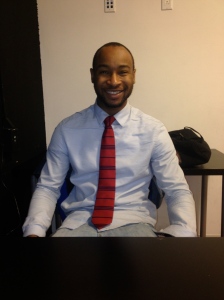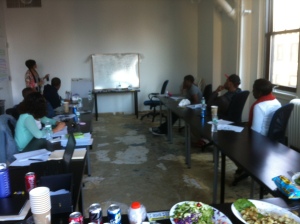In this same workshop we also revisited the topic of brain development. We reviewed the difference between the prefrontal cortex or “White House of the brain,” which has the ability to plan for the future, and the amygdala or “reptile brain” that reacts instinctively in fight/flight/freeze fashion.
This helped to introduce the concept of time perspective. Using part of the framework developed by Stanford professors Zimbardo and Boyd, we talked about the advantages and disadvantages of being either a “present hedonist” or a future-oriented individual. Everyone agreed that it was best to live a balanced life.
Since future orientation is the time perspective that most young people generally need to cultivate, we talked about how athletes who are off season or injured often use visualization as a way to “stay in the game.” Our young people learned that going through the motions in your brain actually improves your muscle memory and the chances of you succeeding in whatever actions you plan to take in the future.
We then dimmed the lights and I led a the group in a guided visualization of a day when they hit all their goals and “earned all the points” they needed. I asked them to sit with the feeling of accomplishment and self-pride. This was the first time that I’ve ever done this exercise, and I did not realize how powerful it would be. One person emerged from the activity with a peaceful aura, but two others became quite emotional. This was a moment when I was especially grateful for the clinical staff in the room. Talk about cathartic!


